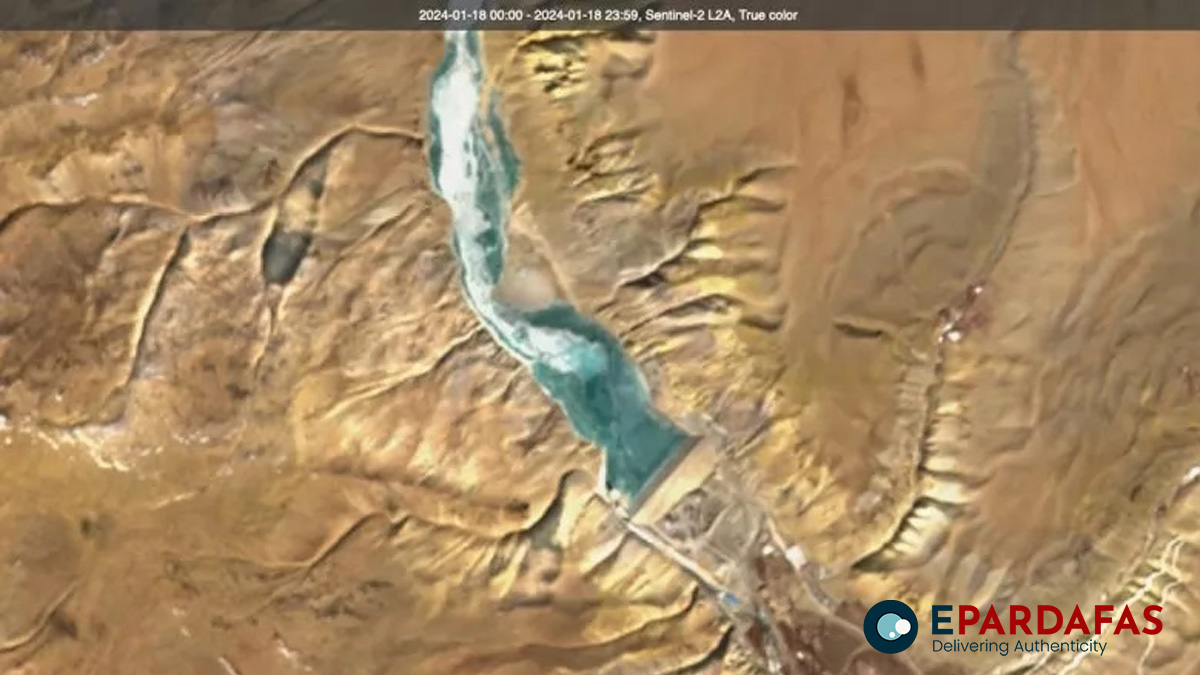
China Completes Dam Construction in Remote Western Tibet, Raises Concerns Over Water Control to Nepal and India
In a significant development, China has seemingly concluded the construction of a new dam in the remote western Tibetan region, a move that could potentially grant Beijing control over the water flow to Nepal and India’s northern plains. Newsweek.com reported on January 22, citing satellite images, that the completion of the dam on the Mapcha Tsangpo River has raised concerns over water management in the region.
The Mapcha Tsangpo River, known as Ghaghara in India and Karnali in Nepal, is a crucial and perennial source of freshwater for the populations in western Nepal and India’s northern plains. Analysis of satellite imagery from Sinergise’s Sentinel Hub website, using photographs captured by the Sentinel-2 satellite of the European Union’s Copernicus earth observation program, indicates that construction on the dam began in July 2021.
Situated in the north of the town of Burang (Tibetan: Purang), near the sacred Mt Kailash in Tibet’s Ngari prefecture, the dam is now visible in images taken this month from Earth orbit. The concrete structure is approximately 18 miles north of Nepal’s border town of Hilsa and about 37 miles east of the Indian border. Hilsa, with around 51,000 residents, serves as a critical point, while Nepal’s broader western region houses over 4 million people.
Following Nepal, the Mapcha Tsangpo flows into India, where it is referred to as the Sarayu, passing through the holy city of Ayodhya in the northern state of Uttar Pradesh.
Additionally, China is reportedly constructing another dam north of the Burang site, with construction commencing in December 2022, as per China’s official Xinhua news agency. This new project could further extend China’s control over Tibet’s river system upstream from the Mapcha Tsangpo.
Omair Ahmad, managing editor for South Asia at The Third Pole, draws parallels between China’s actions in Tibet and its hydropolitics in the Mekong Delta of Southeast Asia. Ahmad highlights China’s assertion of rights as an upstream neighbor, challenging international norms.
He points out a significant difference, stating, “unlike the Mekong, there are no regional water institutions like the Mekong River Commission in South Asia, so there is not even a space to engage.”
Moreover, China’s dam-building initiatives in Tibet extend beyond this project. In 2021, China announced plans to connect Tibet’s river systems with the mainland, involving the construction of a mega dam along the border areas with India.
India has previously protested China’s hydropower projects by refusing to purchase electricity from sites with Chinese investment, such as the Chameliya hydropower station in Nepal, built with Beijing’s financial aid.
Adding another layer to the geostrategic landscape, China has built the Ali Pulan Airport in the sensitive Tibetan border region. This dual-use airport, operational since late last month, serves both civilian and military purposes. Ali-Pulan is the Pinyin rendition of Ngari-Purang, the prefecture and county in which it is located. The airport further underscores China’s strategic interests in the region.













Comments